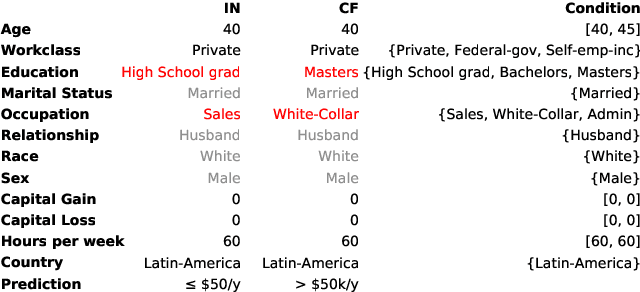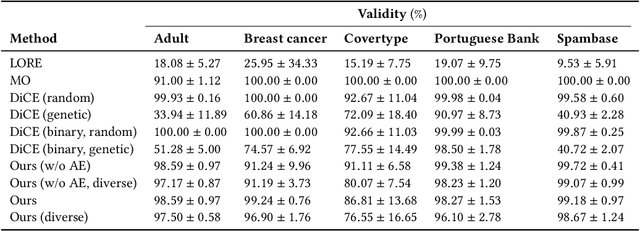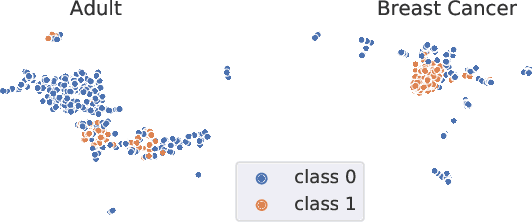Robert-Florian Samoilescu
Model-agnostic and Scalable Counterfactual Explanations via Reinforcement Learning
Jun 04, 2021



Abstract:Counterfactual instances are a powerful tool to obtain valuable insights into automated decision processes, describing the necessary minimal changes in the input space to alter the prediction towards a desired target. Most previous approaches require a separate, computationally expensive optimization procedure per instance, making them impractical for both large amounts of data and high-dimensional data. Moreover, these methods are often restricted to certain subclasses of machine learning models (e.g. differentiable or tree-based models). In this work, we propose a deep reinforcement learning approach that transforms the optimization procedure into an end-to-end learnable process, allowing us to generate batches of counterfactual instances in a single forward pass. Our experiments on real-world data show that our method i) is model-agnostic (does not assume differentiability), relying only on feedback from model predictions; ii) allows for generating target-conditional counterfactual instances; iii) allows for flexible feature range constraints for numerical and categorical attributes, including the immutability of protected features (e.g. gender, race); iv) is easily extended to other data modalities such as images.
Preservation of Anomalous Subgroups On Machine Learning Transformed Data
Nov 09, 2019



Abstract:In this paper, we investigate the effect of machine learning based anonymization on anomalous subgroup preservation. In particular, we train a binary classifier to discover the most anomalous subgroup in a dataset by maximizing the bias between the group's predicted odds ratio from the model and observed odds ratio from the data. We then perform anonymization using a variational autoencoder (VAE) to synthesize an entirely new dataset that would ideally be drawn from the distribution of the original data. We repeat the anomalous subgroup discovery task on the new data and compare it to what was identified pre-anonymization. We evaluated our approach using publicly available datasets from the financial industry. Our evaluation confirmed that the approach was able to produce synthetic datasets that preserved a high level of subgroup differentiation as identified initially in the original dataset. Such a distinction was maintained while having distinctly different records between the synthetic and original dataset. Finally, we packed the above end to end process into what we call Utility Guaranteed Deep Privacy (UGDP) system. UGDP can be easily extended to onboard alternative generative approaches such as GANs to synthesize tabular data.
 Add to Chrome
Add to Chrome Add to Firefox
Add to Firefox Add to Edge
Add to Edge